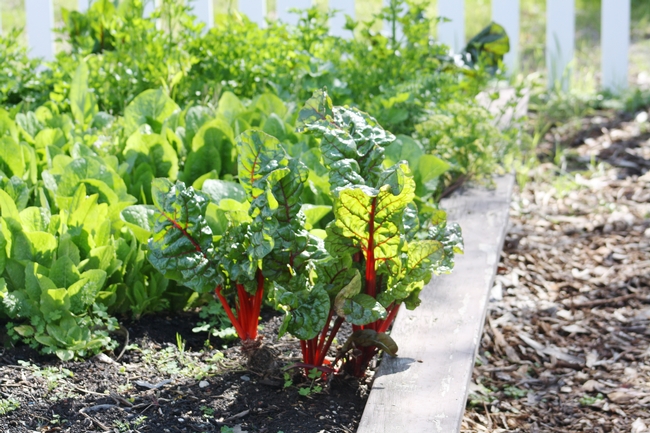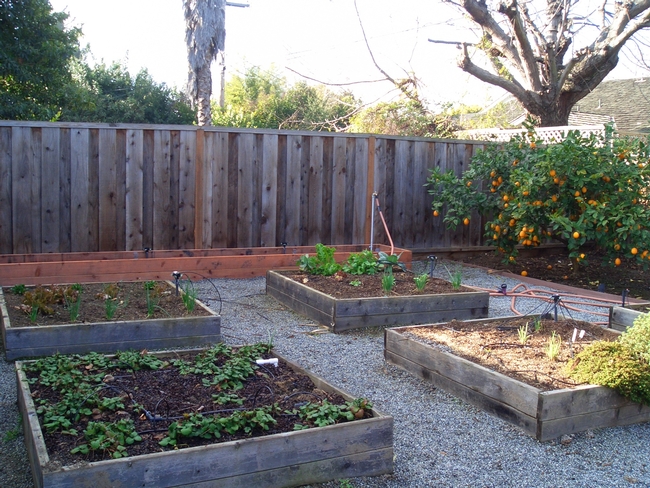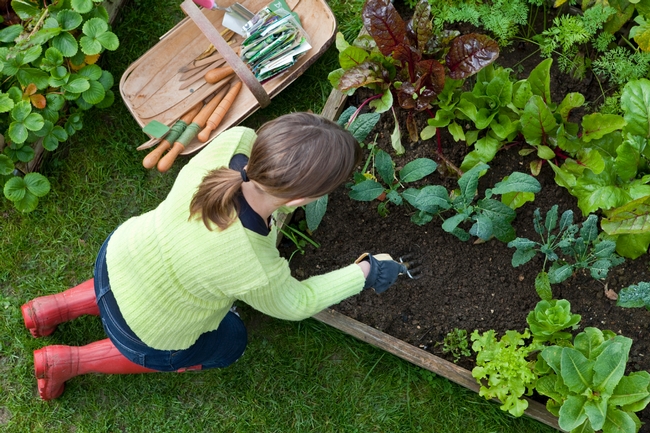Posts Tagged: Planting
Ten tips for vegetable gardening during a drought
Is it possible to grow a vegetable garden when water resources are scarce and water rationing could be imposed? Water responsibly, plant carefully, and select fruit and vegetable varieties that are drought tolerant. All of these sustainable gardening practices require less water – and help ensure your family has access to a variety of nutrient rich foods.
Ten simple drought tips to reduce water use in your backyard garden
- Planting time
Plant earlier in spring and later in fall. Planting earlier in the spring season takes advantage of the warm weather and reduces exposure to high mid-summer temperatures. Planting later in the fall minimizes the use of supplemental water and takes advantage of seasonal rains to establish plants. For example, tomatoes and other nightshade crops such as peppers and eggplants, should not be planted until soil temperatures reach 55 degrees. With a warm spring this could be as early as mid-April. Remember to always use a soil thermometer for accurate soil temperature readings.
- Mulch, mulch, mulch!
A 3- to 4-inch layer of mulch can reduce watering needs by as much as 50 percent. Mulch reduces water evaporation and keeps soil temperatures down during hot summer months. Grass clippings, dried leaves, pine needles, straw and shredded bark are all examples of natural mulches which can be used to cover the soil. Hay is not recommended because it contains seeds, which yields weeds and can become a problematic option.
- Enclosed spaces
Gardens planted in enclosed spaces, for example a raised garden bed, retain water better than gardens planted in open soil. Plant seeds and transplants in a hexagonal "off-set" pattern rather than in straight rows. A hexagonal arrangement groups plants closer together, which provides shade from leaves, keeping soil cool and water from evaporating. - Companion planting
Companion planting is the practice of grouping crops together for mutual benefit. The Native American “three sisters” approach of planting corn, beans and squash together are the perfect example of companion planting. Tall cornstalks provide a structural support for the climbing beans, the beans return nitrogen back into the soil, and the squash spreads across the soil acting as a mulch and keeping the soil cool. - Watering times
The best time to water your garden is in the late evening and early morning hours, typically between 9 p.m. and 6 a.m. The cooler morning temperature and limited wind reduced water evaporation rates. - Water efficiently
Overhead watering with a sprinkler system is not as efficient as drip irrigation. Compared to overhead sprinklers - drip systems can reduce water usage by up to half. Install a drip irrigation system, grouping plants with similar water needs together on one drip irrigation line. Drip irrigation systems are relatively easy to install for most do-it-yourself homeowners. The UC Division of Agriculture and Natural Resources book Drip Irrigation in the Home Landscape is a great reference on the materials, design and installation of a drip system.
- Control Weeds!
Pesky weeds compete for valuable water, sunshine and soil nutrients in your garden. Remove weeds before they have an opportunity to flower or spread. Visit the UC Integrated Pest Management website for tips on controlling weeds to identify recommendations for specific weed species. - Drought Resistant Crops
Purchase varieties of fruits and vegetable that do well in hot and dry climates. Many heirloom varieties from Mediterranean regions are prized for being drought tolerant. Smaller varieties bred for containers often produce a more bountiful yield per plant than standard varieties. Avoid water hogs! Some favorite water-efficient edibles from UCCE Master Gardeners include: asparagus, chard, eggplant, mustard greens, peppers, roma tomatoes, and California native strawberries. Check with a local UCCE Master Gardener Program about which varieties are recommended for your zone. - Peak water times
Fruit and vegetables have critical periods for increased water demands. For most plants once they become established watering times and amounts can be reduced until the flowering or fruit setting process begins. An increased amount of water should be reintroduced during this time. After this initial period of fruit set water can slowly be reduced again. In some cases, reducing water can improve the flavors of your harvest (think, dry-farmed tomatoes)! - Garden size
Determine the amount of fruits and vegetables needed to feed your family, does your family have two, four, or eight members? If you overproduced and wasted crops last year - decrease the amount of plants this year. Set up a garden exchange in your neighborhood so everyone grows less but still has a great variety!
The University of California Master Gardener Program extends to the public free UC research-based information about home horticulture and pest management. In exchange for the training and materials received from the University of California, Master Gardeners perform volunteer services in a myriad of venues. If you are interested in becoming a certified UC Master Gardener contact your local UC Cooperative Extension office.
All the Way from Down Under
One of the most prominent and distant--as in far away--visitors to the Häagen-Dazs Honey Bee Haven, the half-acre bee friendly garden...
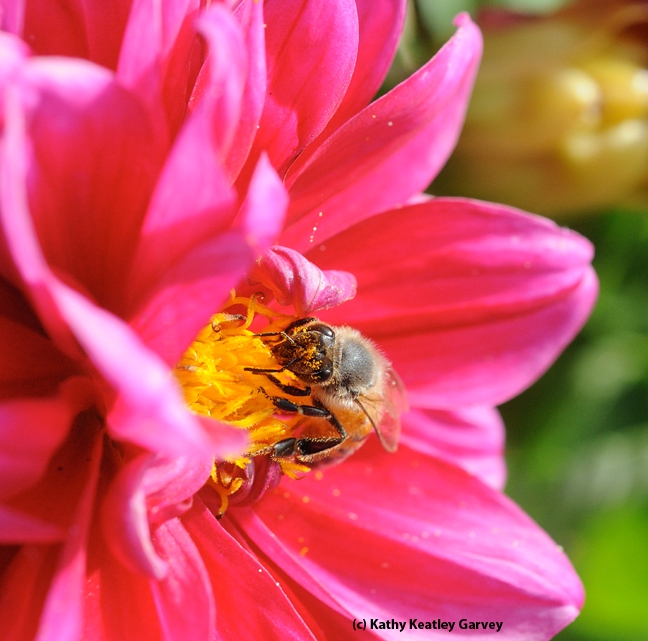
This photo of a bee foraging on a zinnia, taken in the Haagen-Dazs Honey Bee Haven, graces the front and back covers of "Bee Friendly: A Planting Guide for European Honeybees and Australia Native Pollinators." (Photo by Kathy Keatley Garvey)
Cold Weather Ahead
In a couple of days, we will be moving back to Sonoma County, so this will be my final blog for the Solano Program. We will miss being in this nearly frost-free climate of zone 17, but we are happy to be back in a forested rural area. Our home in Occidental is in Sunset’s zone 15, where winter temperatures can dip into the upper 20’s during a cold snap. The New Sunset Western Garden Book shows a detailed climate zone map of the entire Bay Area (pages 32,33), including the inland Delta areas. Aside from the milder zone 17, Solano County includes a big chunk of zone 15, 14, and 9, which is near Vacaville.
Companion Planting
One way to beat the frost is to plant the most sensitive plants, like Lantana (Lantana camera) with some other more frost hardy plant, like California lilac (Ceonothus spp.) (see photo), seen cascading over a retaining wall in my neighborhood. The evergreen foliage protects most of the sensitive parts of the Lantana as an unexpected symbiosis.
Bougies to Go
For those of you like me who can’t stand to go without a Bougainvillea (Bougainvillea spectabilis), my solution to zone 15 living is to pot them, which makes them portable and easily placed in a protected place during a frost alert. (see photos)
Break out the Frost Covers
And yes, I’ve found that you can have avocados (Persea americana) in zone 15. But you do have to keep the frost covers handy during the coldest months. We have two at our Occidental condo, and I got the hardiest ones I could find: ‘Mexicola’, which is very cold hardy to 20 degrees F. The Meyer lemon (Citrus x meyeri) is also a favorite of mine. It’s best to get early ripening varieties in frost prone areas, because fruit is damaged at several degrees below freezing. However, frost covers can raise the temperature by 6 degrees, which often is just enough to protect the fruit.
Late Blooming Apricots
I had given up on trying to grow apricots (Prunus armeniaca) in zone 15, but recently I found two late blooming varieties: ‘Harcot’, and ‘Harglow’. The latter is also disease resistant. So, I’ll be putting one or two dwarfs in, in another month or two.
Enjoy this beautiful fall weather.
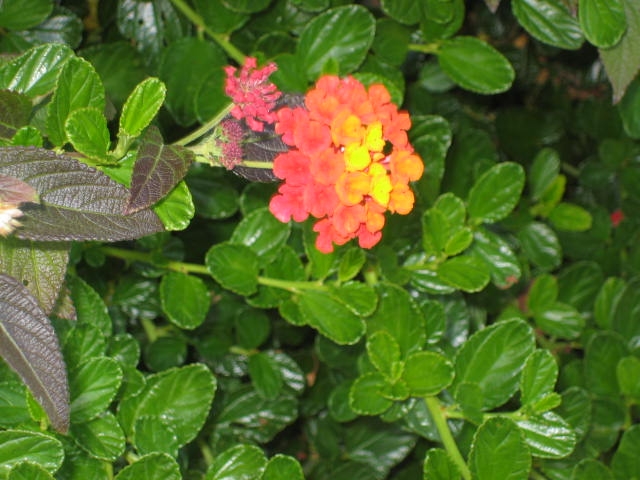
Lantana protected by Ceanothus. (photos by Bud Veliquette)
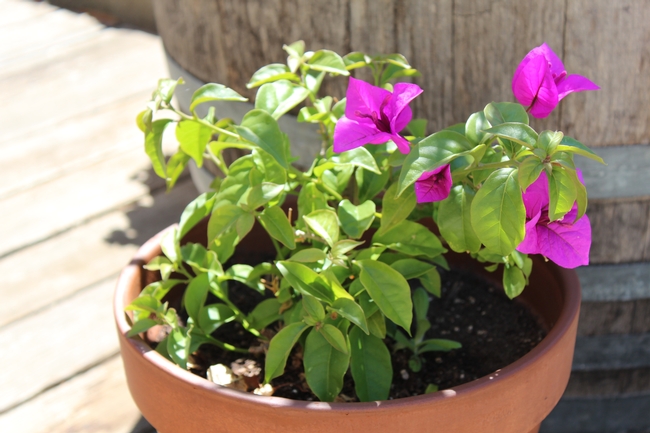
Bougainvillea beauty in a pot.
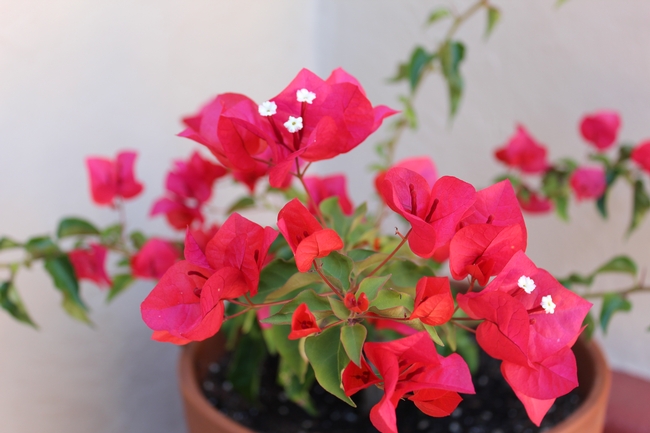
Another bougie!
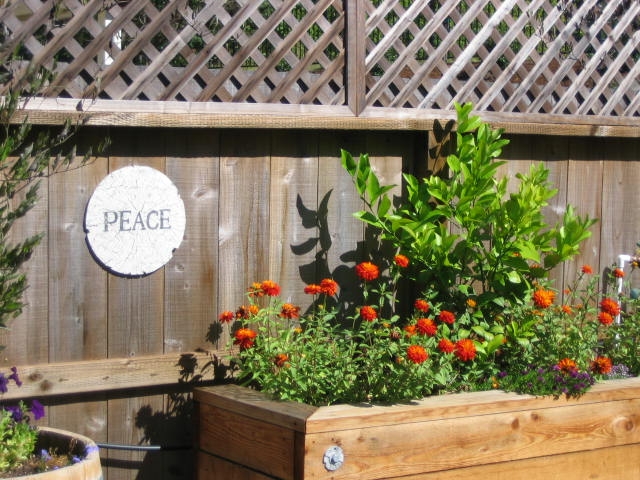
Citrus in a raised bed surrounded by Zinnia.
Companion Planting
As the summer vegetable garden's bounty is harvested it is time to think about a second planting to keep things going and even begin to move towards cooler-season crops. According to Renee's Garden (gardening@reneesgarden.com) this is the perfect time to plant short season varieties. You can go to their website for planting information and even garden plans, but generally it is a good time to begin all the brassicas, lettuces and other salad greens, peas and several herbs. And it's a great time to think about companion planting.
A couple of months ago I was curious and did some research on companion planting and found that not only do some plants do better with certain others, but some are actually harmed (or at least hindered) by some others. I found, for instance, that you should never grow basil with sage. Oh. I had just planted a lovely couple of basil plants right next to my sage. And no herbs with the chard. Again, my little garden is a perfect example of what NOT to do. So here are a few things I learned and a couple of resources you might find interesting before you put in your next crops.
Do NOT plant any of the brassicas (cabbages, kale, kohlrabi, cauliflower) near tomatoes, beans, peppers, or strawberries. Likewise, do NOT plant potatoes near tomatoes or squashes; nor peas near onions, garlic, leeks or chives. Do plant your basil right next to your tomatoes. The basil actually improves the flavor of the tomatoes on the vine. Beets go well with lettuces, onions and the brassicas and are helped by catnip, garlic and mint.
If you find that your strawberries are being eaten by worms, try planting borage near them to strengthen their resistance to insects and disease. A border of thyme around those strawberries will also help deter the worms. Borage, in fact, along with loveage and geraniums, is a very good companion to almost everything including your cabbage.
Cilantro/coriander is good with spinach; sage will help repel moths from your cabbage crops and dill is a good companion to lettuce, cabbage and onions. But don't plant it near your tomatoes as it will attract the tomato hornworm.
Parsley sacrificially attracts insects that attack tomatoes. Tarragon's scent is disliked by most pests and is thought to have "nurse properties", enhancing the flavor of crops grown with it. Marigolds are a "wonder drug" in the garden, and FRENCH marigolds (Tagetes patula) produce from their roots a pesticidal chemical that will last in the soil years after the plants themselves are gone. Nasturtiums attract aphids so they will leave your other plants alone and the nasturtium petals and young leaves are great in a salad.
There is a wealth of information out there on companion planting and you can find information on just what you intend to plant. Below are some sources that I found helpful with one caveat: sometimes I found conflicting information in different sources. As always, gardening can be an adventure--but a beautiful and tasty one!
Resources
http://ucanr.edu (Search: Companion Planting)
http://www.organicgardening.com
wikipedia.org/wiki/List_of_companion_plants
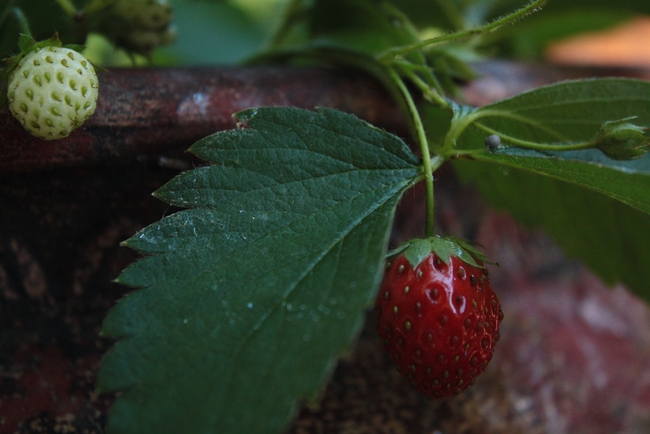
A strawberry dangles from a pot. (photos by Jennifer Baumbach)
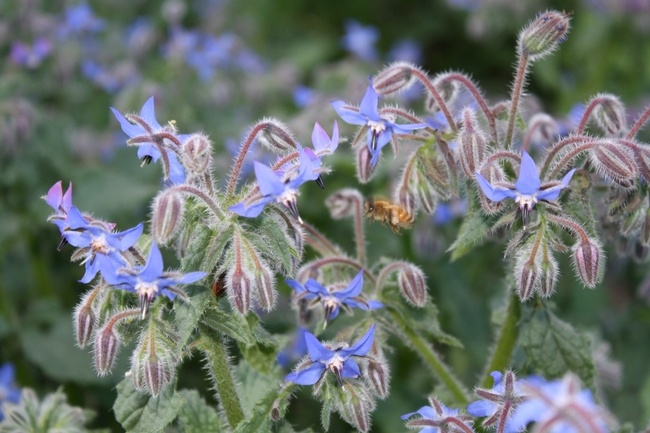
Bee visiting borage.
Strawberry Delight
I love strawberries and this is the first year I’ve made a large bed of them. I think they are perfectly situated in a long bed against my deck. The bed is a little more than a foot wide, so I was thinking that what might be interesting is to try companion planting the bed. So I began my research and looked for what would go (or should I say ‘grow’) well with the strawberries.
To my surprise, there are a few things that do well with strawberries. Spinach does well, and for me would fit neatly behind and between the berry plants. Lettuce is on the list too, however I think my bed might be just a little too much on the hot side for the baby greens I like. Onions also do well, and well, barely take up any space. Borage is said to help improve the soil for the Strawberries both if planted prior to the strawberries and with the strawberries. Finally Bush Beans do well with them too, which I’m eager to try. The bushy beans provide shade for the tender berries as well as camouflage from the friendly (hungry) birds that frequent the garden.
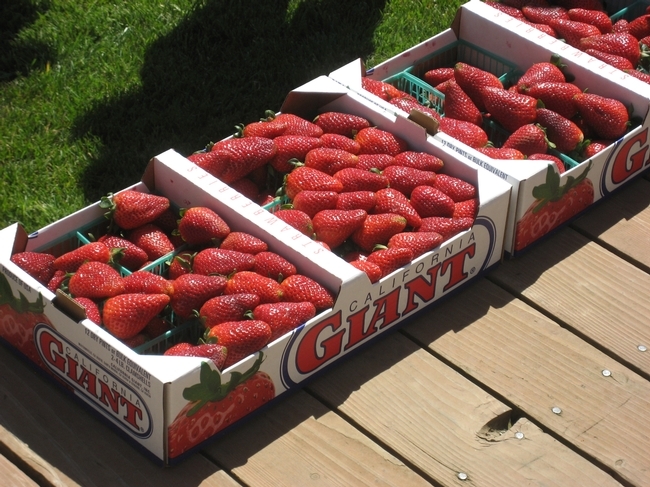
Strawberry crate


